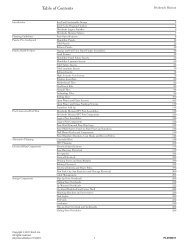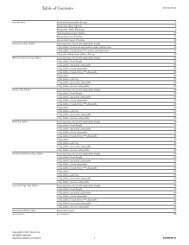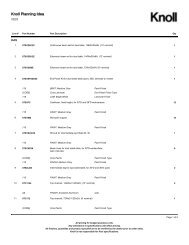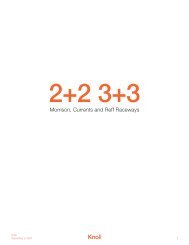Richard Schultz Collection Brochure (50.84 MB) - Knoll
Richard Schultz Collection Brochure (50.84 MB) - Knoll
Richard Schultz Collection Brochure (50.84 MB) - Knoll
Create successful ePaper yourself
Turn your PDF publications into a flip-book with our unique Google optimized e-Paper software.
2 0 0 3<br />
Pavilion ®<br />
<strong>Richard</strong> with Pavilion<br />
2002 <strong>Collection</strong><br />
Is it possible to design an interesting original chair out of tubing?<br />
If you look back and think in terms of inheriting the tradition of Mies van der Rohe and Gropius and Breuer – who<br />
all designed iconic tubular chairs – you can't make a chair that's more minimal than that in terms of exploiting those<br />
materials. I suppose it is how painters felt about Picasso who did everything – what was left for them to do?<br />
One of the ways of using those materials and achieving something interesting without repeating is to use different<br />
thicknesses. Use of heavy members and thin members is a device that allows you to produce a sculptural effect<br />
that is like a drawing that has thick and thin lines. It is a way of adding interest to the design. The arm is thicker<br />
because it is more comfortable for your arm, and then the weight is supported by a thin piece of material that is<br />
only minimally needed for the support of the seating surface and the arms. On a couple of different levels it works.<br />
One is that it makes it a more interesting sculpture by using different thicknesses. It also allows you to put the<br />
furniture together avoiding exposed welded joints.<br />
In many ways “form follows technique” is a more of a governing idea than “form follows function.”<br />
If comfort is a given then what controls form is the choice of material and technique.<br />
I think that is well illustrated in the 2002 <strong>Collection</strong>.<br />
Pavilion 2003<br />
I first developed the Pavilion while working for <strong>Knoll</strong> in 1976 as an alternate to an umbrella. The legs were made<br />
of plastic sewer pipes and we tested it against high winds by setting it up in front of an airplane at a local airport.<br />
It was never put into production.<br />
We now refined the design to create a stainless steel modular structure that defines space and creates shade.<br />
The pleated curtains look delicate and are slightly transparent. In the garden it is sculpture.<br />
15

















